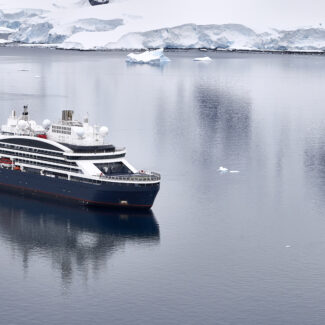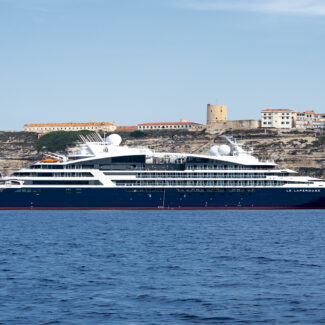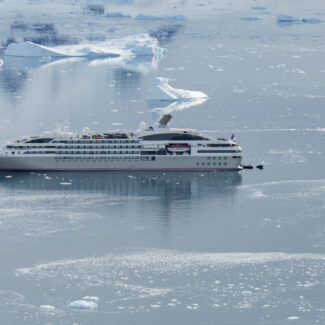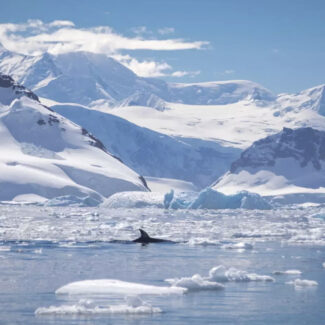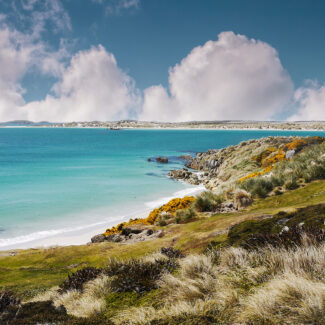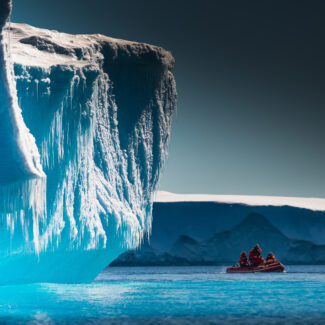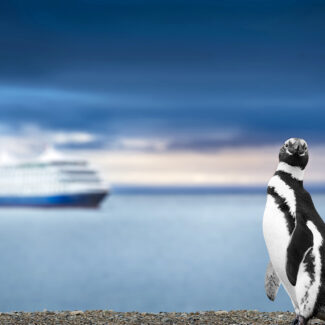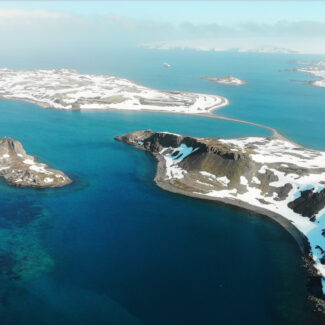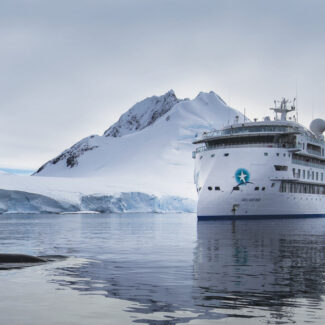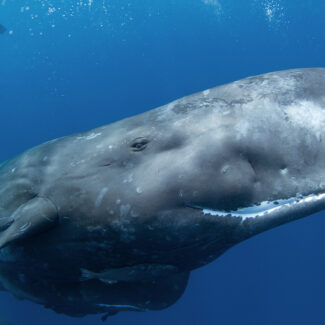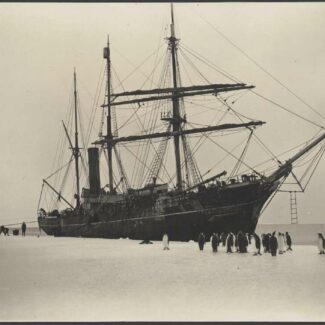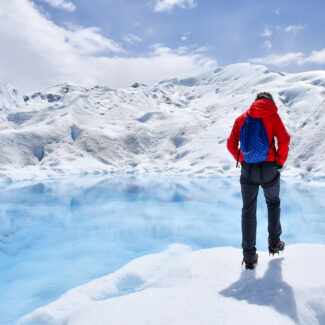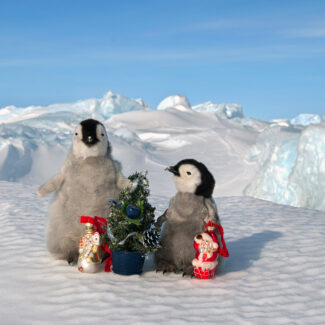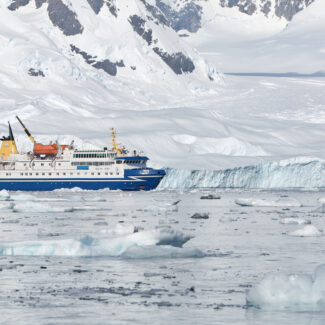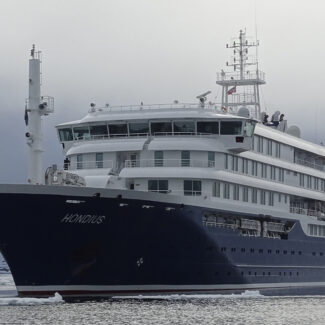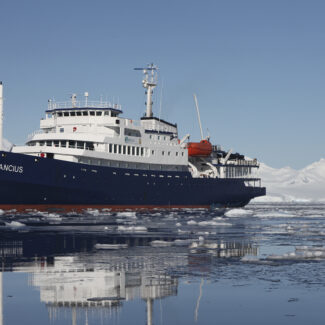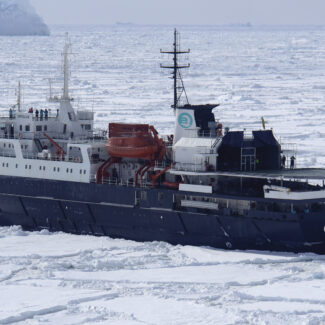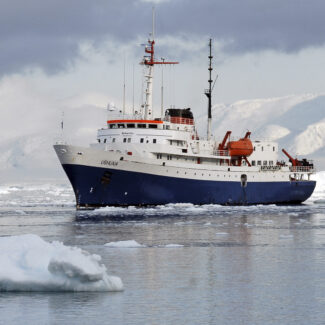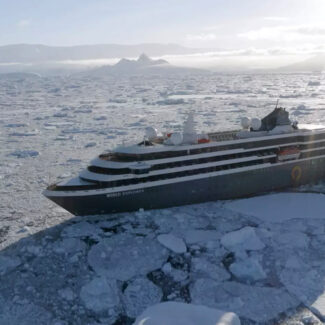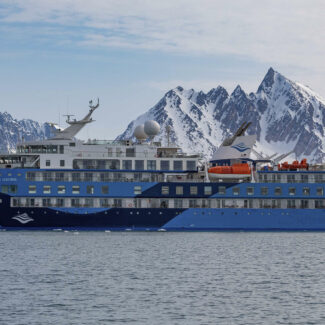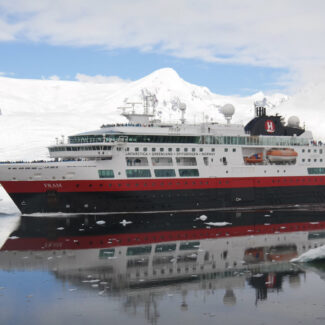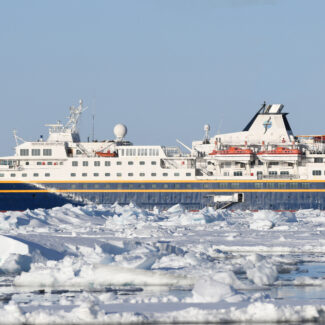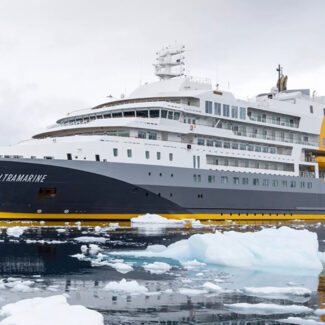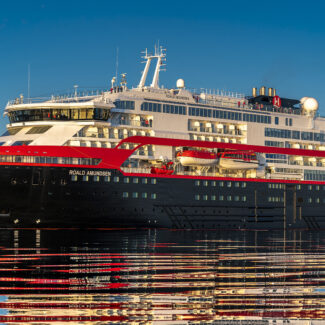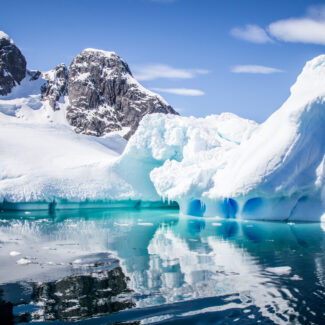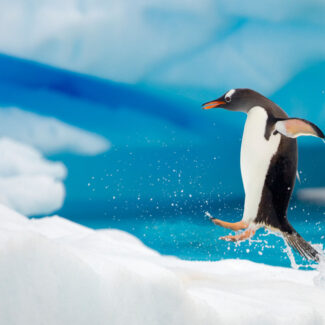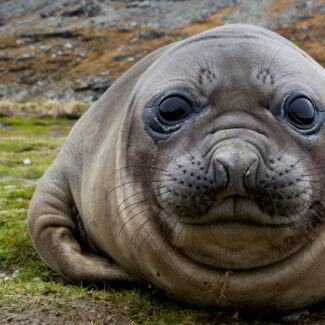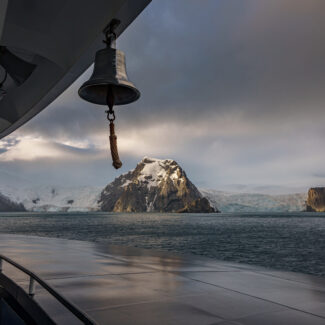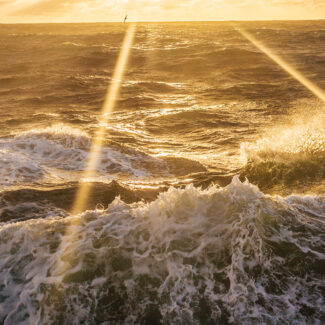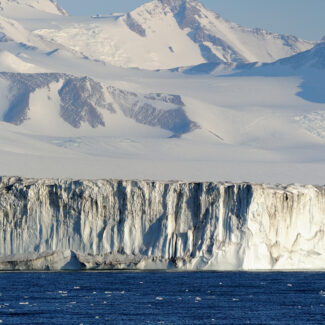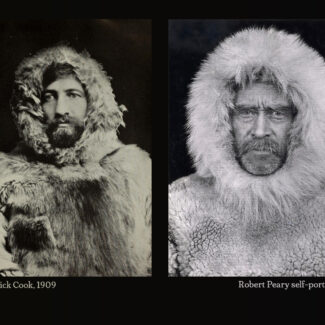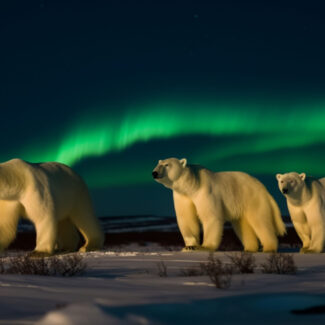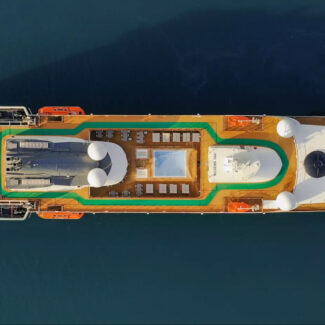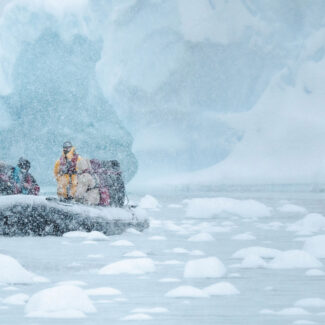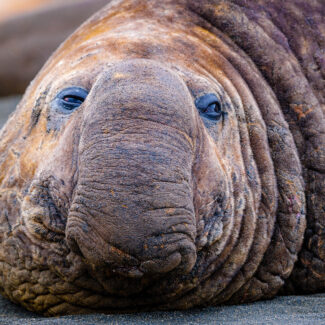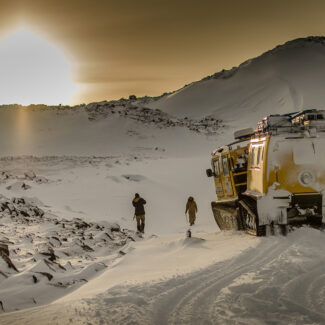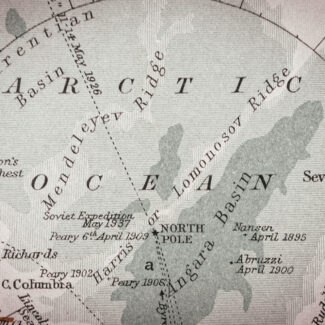7 Hair-Raising Arctic Hare Facts
- (1) They’re One of a Number of Closely Related Arctic/Subarctic Hares
- (2) They’re Among the Biggest Hares (and Biggest Lagomorphs)
- (3) They Often (But Not Always) Change Color With the Seasons
- (4) They’ll Shelter in Dens & Scrapes
- (5) They Run—and Hop—With Impressive Speed and Agility
- (6) They Can Be Essential Supplementary Fare for the Arctic Wolf
- (7) They Are Seasonally Solitary Creatures
- Where to See Arctic Hares
The windswept, often bone-chillingly cold tundra expanses of the North American Arctic might seem unfriendly indeed to a smallish mammal, but the Arctic hare—the most northerly of all lagomorphs (the mammalian order that includes hares, rabbits, and pikas)—prospers in this polar environment.
Nibbling on willows (normally their go-to food) as well as crowberries, grasses, mosses, lichen, and even seaweed—they sometimes venture out onto the sea ice to forage for the latter—Arctic hares are active all year-round in their favored haunts, primarily the wide-open barrens north of the treeline. (Though, it should be said, southerly populations of the hare may range into the boreal forest as well.)
Read on for seven fascinating nuggets about Arctic hare adaptations, distribution, and behavior that may certainly raise an eyebrow, if not be outright hair-raising!
(1) They’re One of a Number of Closely Related Arctic/Subarctic Hares
Arctic hares are one of a cluster of three species—the taxonomy being a bit disputed—of poleward-ranging lagomorphs in Eurasia and North America. The Arctic hare proper ranges through the Canadian High Arctic east of the delta of the Mackenzie River and eastward into Greenland, reaching its very southernmost range in the alpine and plateau country of Newfoundland. Westward, meanwhile, the Alaskan hare inhabits coastal reaches of western Alaska. And the mountain hare—also known as the tundra hare—of the Old World inhabits most of the mainland Eurasian Arctic, while also ranging southward as far as the British Isles, the European Alps, and the northern Japanese island of Hokkaido.
Scientists continue to scrutinize the exact taxonomic relationships between these three similar-looking and similarly sized northern hares, with some proposals lumping the trio together as a single circumpolar species. Other work suggests the Alaskan hare is indeed a standalone species, while illustrating the genetic variation contained within the Arctic- and mountain-hare umbrellas. A 2005 study suggested two separate refugia offered the Alaskan and Arctic hare habitat during the glacial advances of the Pleistocene: in Beringia (the Bering Strait-straddled geography of Alaska and eastern Siberia) and in the Canadian High Arctic, respectively. Multiple refugia appeared to be available in Eurasia (less extensively ice-ridden during the Pleistocene) for the mountain hare, which shows greater genetic diversity.
Anywhere from four to seven subspecies have been defined for the Arctic hare, including a unique kind restricted to Newfoundland and southern Labrador. The species’ range only slightly overlaps with a more distant relative that’s somewhat more familiar to your average resident of Canada or the northern U.S.: the snowshoe hare, which looks superficially similar to the Arctic hare but which is significantly smaller. Snowshoe hares are specialists of boreal, northern mixed-hardwood, and mountain forests, and the Arctic treeline roughly demarks the northern limit of their range.
With its pristine white coat, this arctic hare blends seamlessly into its snowy habitat, a true master of camouflage! It’s one of several closely related arctic and subarctic hare species, each uniquely adapted to survive in the breathtaking, yet challenging, northern landscapes.
(2) They’re Among the Biggest Hares (and Biggest Lagomorphs)
Compared to your average European rabbit or North American cottontail, the Arctic hare is a genuine heavyweight. Indeed, it’s one of the very biggest members of the rabbit, hare, and pika order: the lagomorphs. Big Arctic hares may tip the scales at 15 pounds or so. This illustrates a widely applicable ecological theory called Bergman’s rule, which states that among closely related groups of organisms, the higher-latitude species (and subspecies) tend to be larger than lower-latitude relatives, an adaptation to colder environments.
The Alaskan hare reaches comparable sizes and may even outweigh the Arctic hare, while the mountain hare of Eurasia is roughly similar but typically a bit smaller. Other hefty hares include the European (or brown) hare and the antelope and white-sided jackrabbits of western/southwestern North America.
Look at those ears! This impressive arctic hare isn’t just fluffy; it’s one of the largest hare species and among the biggest lagomorphs on Earth! Their size is just one of the many incredible adaptations that allow them to thrive in the challenging Arctic environment.
(3) They Often (But Not Always) Change Color With the Seasons
Like the snowshoe hare—the famous “varying hare” of Canada and the northern U.S.—the Arctic hare often shows distinct winter and summer pelages that lend it appropriate camouflage across the seasons. In winter, Arctic hares are almost entirely white save for the black tips of their ears—whiter even than the snowshoe hare, which, while white-coated in winter, shows a brown base to its white hairs and has yellow-tinted underpaws in that seasonal getup. In summer, southerly populations of Arctic hare turn brown, but far northern hares may stay white the whole year through—a reflection of the more severe, all-around wintrier climate in the High Arctic.
Besides the snowshoe hare, other lagomorphs that may shift coloration with the seasons include the other Arctic-ranging hares, the Alaskan and mountain hares, as well as northern populations of the white-tailed jackrabbit.
Witness the incredible transformation! This arctic hare showcases its seasonal coat change, a brilliant adaptation that helps it blend into the shifting Arctic landscape. While often changing color, some populations remain white year-round, reminding us of the fascinating diversity within this resilient species.
(4) They’ll Shelter in Dens & Scrapes
Arctic hares are definitely tough buggers: They’ll commonly just tuck down on the ground, forming themselves into a compact ball and only touching the snowpack with their well-padded hindpaws, to endure a frigid wind or full-on blizzard. But studies show the hares will also take shelter in the lee of rocks, boulders, and snowdrifts, and will also dig dens into snowbanks, putting their large, sharp claws—also handy for exposing plants—to good use. In summer, a study based on fieldwork on Ellesmere and Bathurst islands in the Canadian High Arctic showed, Arctic hares sometimes excavate shallow scrapes in the soil—not only to get out of the wind, but to cool off in hot conditions.
Even in the vast open Arctic, this clever hare finds refuge! Arctic hares are masters of survival, often sheltering in natural dens or creating scrapes in the snow to escape harsh winds and predators, showcasing their incredible resilience.
(5) They Run—and Hop—With Impressive Speed and Agility
With their oversized hind legs—a characteristic feature of the lagomorphs, not only hares and rabbits but also, to a lesser extent, the little rodent-like mountain-dwellers known as pikas—Arctic hares can cover ground mighty speedily, capable of achieving astonishing speeds of up to 60 kilometers per hour (approximately 40 miles per hour), as well as change direction with incomprehensible agility, employing erratic, zig-zagging movements, sharp turns, and unpredictable changes in trajectory in an attempt to confuse and outmaneuver any pursuers.
As for their jumping ability, their powerful hind legs allow them to make impressive leaps. Arctic hares can jump up to 2 meters (about 6.5 feet) high in a single bound—an incredible feat that helps them not only evade predators, but also enlarge their viewshed when scouting for them out in the broad, treeless expanses of the tundra.
Interestingly not all Arctic hares run in the same fashion, with their gaits seemingly differing by latitude. According to the Government of Nunavut, more southerly hares run in the typical four-legged fashion, but those farther north sometimes hop along in kangaroo-style when threatened.
Watch them go! Arctic hares are incredibly nimble, able to reach impressive speeds by both running and hopping, a vital skill for evading predators in their vast, open habitat. It’s truly inspiring to witness their agility in action!
(6) They Can Be Essential Supplementary Fare for the Arctic Wolf
A variety of carnivorous critters set their sights on the Arctic hare, including Arctic and red foxes, ermines, Canada lynx, snowy owls, and gyrfalcons. Another is the Arctic wolf, which favors large ungulates—caribou and muskoxen—when and where they’re available. Research shows, however, that the far smaller Arctic hare can be an important supplementary food for wolves—on islands, for example, where only muskoxen and not caribou are found.
And, in fact, a study out of Ellesmere Island and northwestern Greenland suggested that Arctic hares (plus lemmings) may allow wolves to live in areas lacking ungulates entirely.
Standing tall and alert, this arctic hare reminds us of its crucial role in the Arctic food web. While often preyed upon, they are an essential supplementary food source for formidable predators like the arctic wolf, highlighting the interconnectedness of this incredible ecosystem.
(7) They Are Seasonally Solitary Creatures
During the warmer months, when food is more abundant and temperatures are milder, Arctic hares typically lead solitary lives or, at most, are found in small family groups—for example, a doe plus her leverets (young)—as they disperse to find their own foraging areas. Even during mating season (typically April-May), their evasive behavior persists. While there’s increased interaction and competition among males for mates, they surprisingly still err towards separation, forming breeding pairs or small mating groups, rather than staying in large aggregations.
But in the coldest, darkest depths of the Arctic winter, these hardy lagomorphs will surprisingly huddle together in quite astonishing numbers, forming groups that can range from a few dozen to as many as several hundred individuals, benefiting not only from shared and conserved body heat, but also a combined, vigilant defense against ever-prowling predators.
In the quiet expanse of winter, this arctic hare embodies resilience, often venturing out alone. While sometimes seen in groups, they are seasonally solitary creatures, perfectly adapted to navigate the vast, snowy landscapes of the Arctic on their own terms.
Where to See Arctic Hares
Not many people venture to the Far North domain of the Arctic hare, but lucky cruisegoers sailing along the shores of Northeast Greenland National Park, for example, or taking the Northwest Passage through the Canadian Arctic Archipelago certainly have the chance to spy these endearing cold-warriors. The hares tend to be most active in crepuscular and nighttime hours, but you never know when you might spot a group at rest or doing a little low-key diurnal foraging!
Disclaimer
Our travel guides are for informational purposes only. While we aim to provide accurate and up-to-date information, Antarctica Cruises makes no representations as to the accuracy or completeness of any information in our guides or found by following any link on this site.
Antarctica Cruises cannot and will not accept responsibility for any omissions or inaccuracies, or for any consequences arising therefrom, including any losses, injuries, or damages resulting from the display or use of this information.


